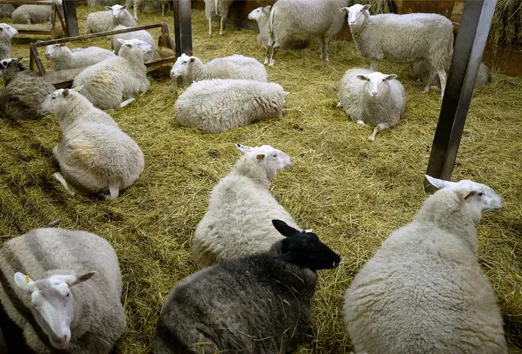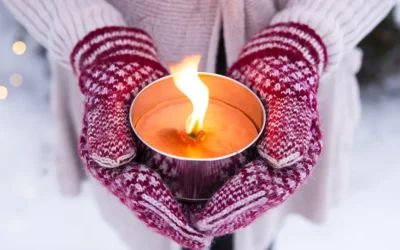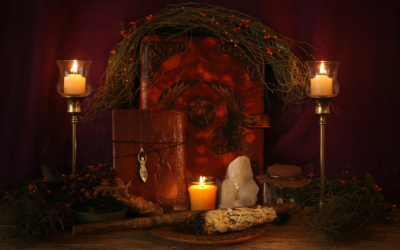Do you want to know how to honor the Goddess Brigid?
Honoring Brigid, the Celtic goddess of poetry, wisdom, healing, and protection, is a beautiful way to connect with ancient traditions and celebrate Imbolc. Brigid’s influence spans many aspects of life, and paying tribute to her can be as simple as lighting a candle, reciting a poem, or offering a small token of gratitude. Many devotees find that acts of creativity, such as writing or crafting, resonate deeply with Brigid’s spirit, while others focus on rituals that incorporate fire or water—elements sacred to her.
Whether you’re new to honoring Brigid or deepening an existing practice, the key lies in intention. Approach your tribute with respect and sincerity, and you’ll create a meaningful connection with this beloved goddess.

An ancient Celtic goddess or a Christian saint?
This particular article is about the pagan Goddess Brigid. In Celtic mythology she is a Celtic Goddess, and member of the Tuatha Dé Danann, Brigid was the goddess of healing, fertility, and the hearth.
Not to be confused with the pre-Christian Goddess, there was indeed a Brigid, born in about 451 A.D. in Fochaird(En: Faughart), in County Lú (En: Louth). This article is not about that Brigid. Though she was never officially canonized, Irish folks referred to her as “Saint Brigid of Kildare” as she founded of the monastery at Cill Dara (En: Kildare). She is also credited with creating the St. Brigid’s Cross out of rushes, that are still being made today for protection.
We won’t delve into the coincidence that the Catholic church decided that St. Brigid’s feast day should be on February 1st, the traditional date for the Feast of Brigid, which was called Imbolc, syncretizing the two and creating confusion then as now.
What is the correct way to spell Brigid?
The name Brigid has appeared in various forms over time, largely influenced by the Irish language and the challenges of representing its unique spelling and pronunciation rules in written form. In Irish mythology, written down by Christian monks (as the Irish had no formal written language except for the Ogham found on stone pillars), the name is often spelled “Briġid.” The dot over the “g” is not an error; in the Irish language, this mark indicates an aspirated consonant, representing a softened or vanishing sound.
When typewriters came into use, they lacked the ability to add dots over letters (ḃ, ċ, ḋ, ḟ, ġ, ṁ, ṗ, ṡ), so the convention of adding an “h” after the aspirated letter became standard. Thus, “Briġid” evolved into “Brighid.” As English monks transcribed Irish texts, they adapted the name using English phonetics, leading to variations such as Briget, Brigid, Brigitte, Birgit, Birgitta, Birgitte, Bridgette, Breda, and Breada. These regional variations reflect how far removed from Irish linguistic traditions the English copyists were.
In contemporary pagan traditions, the name “Brigid” has become the most widely recognized spelling, especially in English-speaking contexts. This article itself uses “Brigid” for accessibility and recognition, though the modern Irish spelling is “Bríd” Ultimately, regardless of the spelling, the reverence and energy associated with the name are what truly matter.
How do you pronounce Brighid, Brigid or Bríd?
The traditional Irish pronunciation of Briġid is “Breedge,” similar to the word “bridge” but with a longer “-ee” sound. The dot over the “g” in the older spelling signifies a softened or vanishing consonant, leaving the sound closer to “Briid”. In this instance, the Irish “D” is pronounced like a soft “J” as in “juice.”
The modern Irish spelling, Bríd, follows updated pronunciation rules but retains the same sound: “Breedge.” However, regional and linguistic variations have resulted in different pronunciations, such as “Bree-jid” or “Bree-gid,” which are common outside Ireland.
If you encounter someone whose pronunciation differs, it’s important to remember that the goddess’s energy transcends linguistic nuances. Speak her name with respect and intention, and your sincerity will always be received.
What is Imbolc?
Imbolc is a Celtic festival celebrated on February 2nd, marking the midway point between the Winter Solstice and the Spring Equinox. It is a time of renewal, light, and the first stirrings of spring. Associated with the goddess Brigid, Imbolc honors themes of fertility, creativity, and protection.
Historically, Imbolc was a time for agricultural communities to prepare for the coming season, with rituals focusing on blessings for livestock, seeds, and homes.
The name Imbolc comes from the Irish “i mbolg” meaning “in the belly”. This was the time when flocks of sheep were inspected to count the pregnant ewes that had a lamb “in the belly”. If the numbers were particularly good, the shepherd knew that it would be a good year, and the celebration was that much more joyous. Regardless of the size of their flocks, it was the first time people started to think of spring on the horizon.
Today, modern practitioners celebrate Imbolc as a spiritual occasion, reconnecting with the cycles of nature and invoking Brigid’s blessings for inspiration and protection.

How do you celebrate Imbolc?
Celebrating Imbolc can take many forms, depending on your personal practice and connection to the season. Traditional celebrate Imbolc by lighting candles to symbolize the growing light and invoking Brigid’s blessings for creativity and protection. Some traditions light a lantern, candle, or fire with Brigid’s Flame, keeping that fire alive all year, or at least until Samhain.
The Irish festive meal in honour of the Brigid was a supper of potatoes and freshly churned butter; colcannon was made by adding chopped cabbage to the mashed potatoes. Family members would take turns at pounding the potatoes. This was thought to bring luck and is prevalent in folk traditions, like taking a dash of a churn when making butter. The feast was in gratitude for the previous year’s crops, tempered with hope and protection sought for the crops still to be sown, and fertility for the flock of sheep about to be inspected for Imbolc on the following day.
Another way to honor Imbolc is by incorporating seasonal foods like dairy, oats, and seeds into your meals. Hosting a small ritual, meditating on themes of renewal, or setting intentions for the year ahead are also meaningful ways to celebrate. Whether you embrace ancient practices or craft your own, Imbolc offers a powerful opportunity to honor both Brigid and the turning of the seasons.
What does Brigid symbolize?
Brigid embodies a rich tapestry of symbolism, encompassing creativity, wisdom, healing, and protection. As a goddess of fire, she represents inspiration and transformation, often invoked by poets, artists, and craftspeople. Her association with water, particularly sacred wells, reflects her nurturing and healing aspects. As a goddess of healing, she is called upon to restore health, protect against illness or weakness, and care for the women in the home.
Brigid also symbolizes fertility and abundance, making her a powerful figure for those seeking growth and prosperity. Her presence as a protector of the home and hearth further connects her to themes of safety and family. These diverse symbols make Brigid a beloved and multifaceted deity whose energy resonates deeply with her followers.
What are the signs of the goddess Brigid?
The signs and symbols most associated with Brigid are the single flame, burning alone in darkness, fire, and particularly the fire in the hearth, holy wells in many places in Ireland, particularly those made of stone, and cattle, especially sheep and cows.
Brigid’s presence can manifest in subtle and symbolic ways. Common signs include encounters with her sacred elements, such as fire and water. Birds, particularly swans and crows, are also associated with her, as are sheep and cows, which reflect her nurturing and protective energy.
Dreams or meditative visions featuring flames, wells, or other symbols of Brigid can indicate her presence. Additionally, feelings of sudden inspiration, creative surges, or the urge to nurture and protect are often seen as signs of her influence. Paying attention to these subtle cues can help you deepen your connection with the goddess.
Historians and pagans disagree about two elements attributed to Brigid, namely Brigid’s Cross and the coiled snake.
While it is possible that Brigid’s cross may predate St. Brigid, it is certain that the Abbess Brigid of Kildare is credited with the creation of it in all Christian writing, and it seems that no images or references to a Brigid Cross predate the 5th century, the time of Bridget of Kildare.
As for the Snake, it was typical for Christians at the time to refer to anything pagan as a snake, from practitioners of pagan rites to their deities. Specifically in Ireland, though there have never been snakes on that island, St. Patrick was said to have “driven out the snakes”. Some believe it to be a metaphor for his Christianization of pagans in Ireland.
How can I honor Brigid?
Honoring Brigid can be a deeply personal and fulfilling practice. Light a candle in her honor and focus on themes of creativity, healing, or protection. Create something—whether it’s a poem, a craft, or even a nourishing meal—to celebrate her energy.
Communities venerated the goddess and there were processions where her effigy was paraded represented as a doll. ‘Biddy Boys’ (or girls) went from house-to-house with ‘Biddy’, often a straw doll in a veil (like a bride) and cloak, collecting money and food for the Brigid’s feast. The Biddy Boys were especially popular in County Kerry where the dressed straw Brídeogs (brides) were almost life-size and were carried through the streets in elaborate parades.
You might also choose to incorporate her sacred elements into your rituals or visit a well or body of water to meditate. Dedicate a small area of your home as an altar, adorned with candles, flowers, and symbols of fire and water. Whatever you choose, approach your tribute with sincerity and gratitude.

Imbolc Rituals and Altars
On the even of St.Brigid’s day, January 31st, one traditionally leaves a cake, or bread outside on the window sill, or by the door, along with a square piece of cloth (brat Bríde – Bridget’s Flag), usually small, but sometimes large enough to wrap around a man as a cloak, or a length of ribbon (Ribín Bríde – Bridget’s Ribbon)
It was believed that the Goddess would touch them in her travels, and and would have the power to ward off illness and pain in both humans and animals.
In parts of Connacht, the Biddy Boys would carry a large plaited straw belt (Crios Bríde). The inhabitants of each home passed through the circle of the belt while reciting a prayer to Brigid in the hope of gaining the protection from illness during the coming year. The belt was raised over the heads of the women and dropped down for them to step out of it. The male occupants had to go through sideways from left to right – arm, leg, head, then the other leg and arm.
For an in-home altar honoring Brigid, candles are essential, you can add fresh water from a well, or a river, cakes or bread or colcannon as an offering, and ribbons are a great way to decorate the altar for Imbolc.
Final Thoughts
Bríd is one of the most prominent ancient Irish goddesses, and her connection with Imbolc, lambs, fertility, prosperity and health is an old one.
Today, for many of us, Bríd is still the quintessential mother deity, and keeping the flame alive throughout the year, reverence for wells, and flags and ribbons are small tokens of our devotion. A ritual meal, a meditation on fire and water, a prayer for healing and love, and a few ribbons, and you too can reconnect to an ancient tradition that has continued, mostly unbroken, for centuries.
So whatever you choose to do to honour Bríd and observe Imbolc this year, know that you are not alone in following these traditions, and if you are fortunate enough to gather with others to celebrate, light a candle for yourself, and one for everyone else in the hope of keeping these traditions alive for centuries more to come.
How will you celebrate Imbolc? Let us know in the comments, or on our facebook page: https://www.facebook.com/witchstoreca




